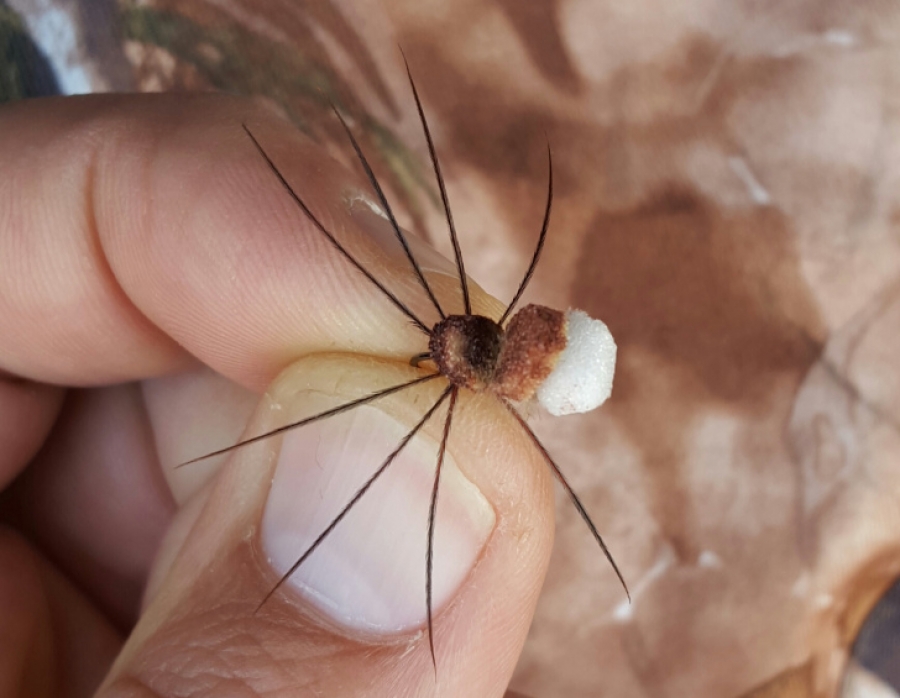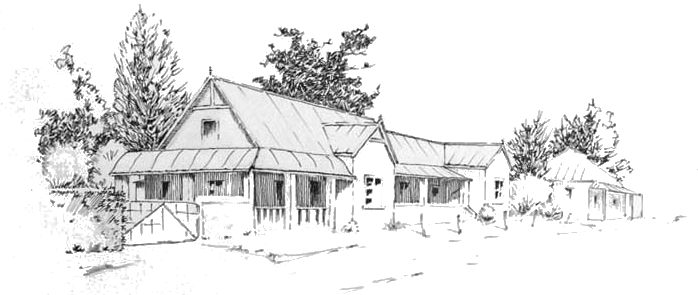Further thoughts on fly design by Ed Herbst.
Jiri Pechar and jig hooks.
At one of the Vice Squad evenings, held every second month at the Cape Piscatorial Society in Cape Town’s CBD and organised by Tudor Caradoc-Davies, I watched the coach of the Czech national junior team tie a nymph and, to my surprise, he turned a conventional hook into a jig hook by bending the front section downwards. He said he preferred this configuration over conventional jig hooks for getting his nymphs to drift hook point up. I was therefore surprised when John Yelland of the Upstream fly fishing shop in Plumstead, Cape Town pointed out that the Dohiku 302 effectively has this configuration. It is a short shank, wet fly hook and quite heavy in the wire which means that on a #16 the smallest bead it will accommodate is a 2mm but in brass or glass this should not make the nymph too heavy for Cape streams. John brought some Rio Two Tone strike indicator mono to that meeting. It is available down to 4x and, greased with Mucilin, will significantly enhance your nymphing success rate.
Click in images to enlarge them
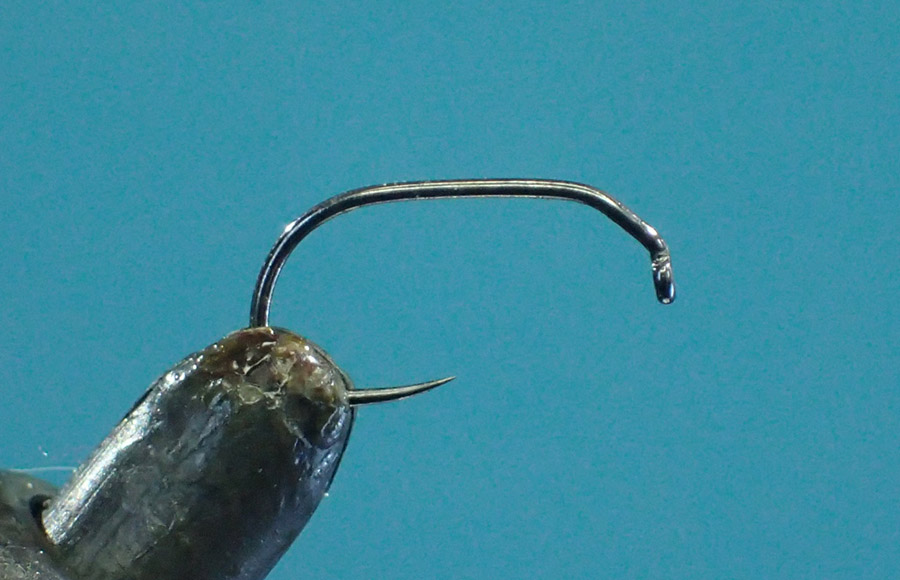
Jiri Pechar’s bent hook and one of his nymphs tied on this modified hook
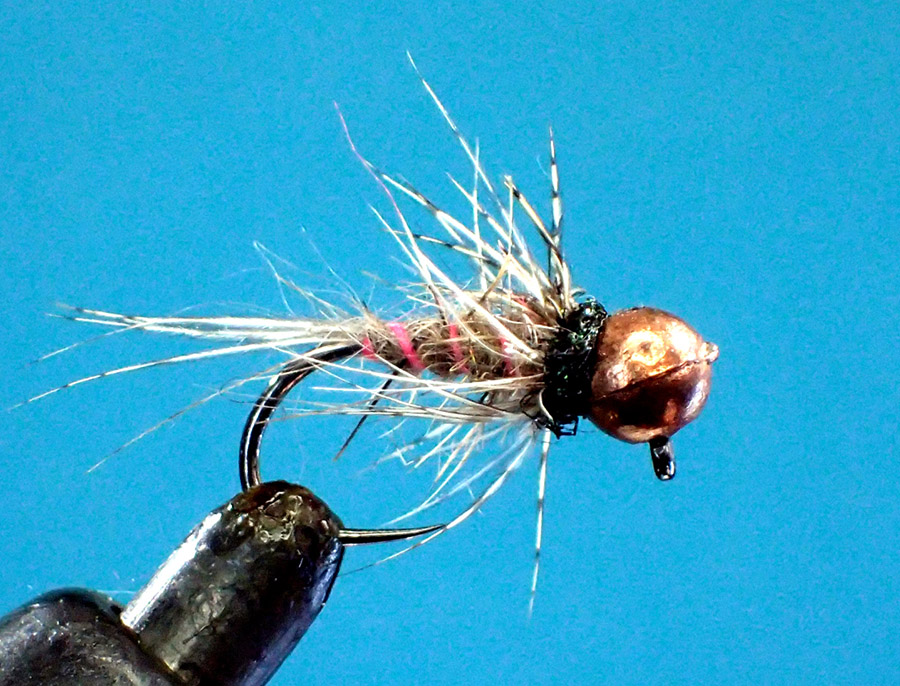

The Dohiku 302 sold at the Upstream fly fishing shop
Bear Lodge Angler
Fred Steynberg, the Rhodes-based guide and I have for many years been mail order customers of Bill and Kathi Morrison in the USA. They don’t just go the extra mile they go the extra marathon to get the esoteric items that I order and which they do not stock. I'm collaborating with professional fly tyer Marcel Terblanche on developing some micropatterns and I wanted to try the big eye C12-BM barbless big eye hook and Tiemco 16/0 thread. Alas neither are available any more, but I bless this couple every time I pull up a chair at the vice. My eyesight is poor and I tie with prescription glasses and the Quasar LED system which significantly enhances my Optivisor magnifyer. Bill sourced this item and posted it to me.
Spyderweb and Larva Lace Foam
My two favourite threads at the moment are 18/0 Nanosilk and Veevus 16/0 which I source through Morne Bayman’s African Fly Angler mail order website. Researching extra fine threads I was surprised to read in Rick Takashi’s book, Modern Midges, that he uses UTC 70 denier on flies down to #30. Surprised, because it has always been available locally. Marcel Terblanche tried it and said that it is stronger than Danville in the equivalent size. Morne expects a new shipment shortly of Semperfli Spyder thread which I am eager to try. Even more exciting is that he is expecting a shipment of Larva Lace foam which is superior in every respect for tying foam flies for trout. Basie Vosloo who farms Birkhall and Gateshead well-know fishing destinations in the Eastern Cape Highlands, tells me that the crack willow is making a comeback in Barkly East and Rhodes after they were decimated by the Working for Water program a few years back and that means that the green sawfly larvae – incorrectly called ‘inchworms’ locally, will once again feature in the diet of trout there. Green Larva Lace is choice of Mario Geldenhuys of Aliwal North for tying his ingenious extended body inchworm and this pattern (which he ties on a needle) becomes even easier if you use the J Son or Renzetti detached body pins. I am writing an article on Larva Lace patterns for this website.
Peter Slingsby’s new book on African ants
Two major components in autumn trout diet on the streams near Cape Town are hoppers and the larva of the Cape dobsonfly. I have now discovered that there is a third. I phoned Peter Slingsby to ask when the nuptial flights of ants occur and he said in autumn. His new book Ants of Southern Africa will be published in a few months’ time. An article by Marcel Terblanche on fishing sunken ant patterns on the Witels stream will appear on this website shortly.
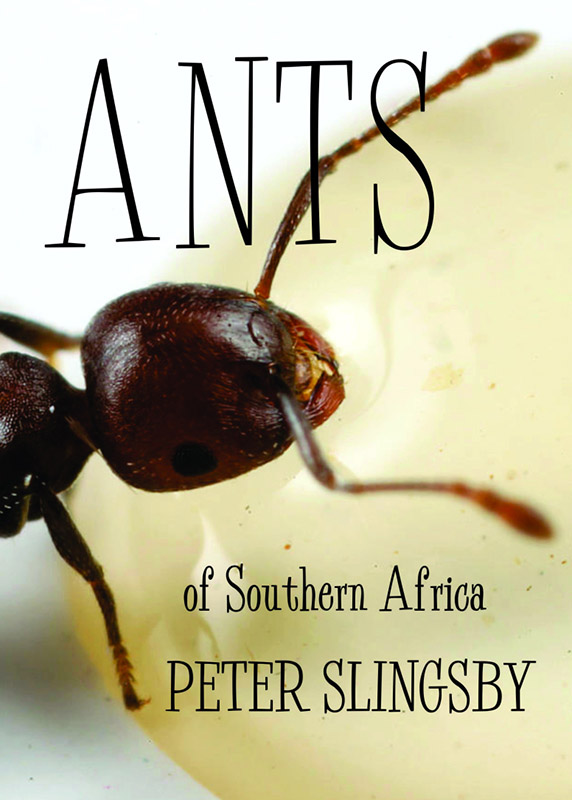
Peter Slingsby’s book on African ants which is to be published shortly
Wolf Spider
Leonard Flemming’s floating Wolf Spider has become an essential in the fly boxes of local small stream fly fishers and Peter Brigg ties a simpler version of this for streams like the Bushman's River in the Natal Drakensberg. You can purchase an ingenious Larva Lace foam variation from Marcel Terblanche which is tied backwards so that the white egg sac becomes a sighter. Marcel was intrigued to read in the sumptuous new Struik publication Freshwater Life that Wolf Spiders hunt underwater for up to an hour at a time and tied a sunken version. It uses a copper wire abdomen shining through a coat of fluorescing UV light-cured resin. While the resin is still tacky he pulls forward some CDC fibres and then cures the resin with UV light. In the example shown below he has used francolin for the legs and the bead can be glass, brass or tungsten depending on water depth and current speed. This is a wide pattern which, as Gary LaFontaine pointed can often be attractive to trout.
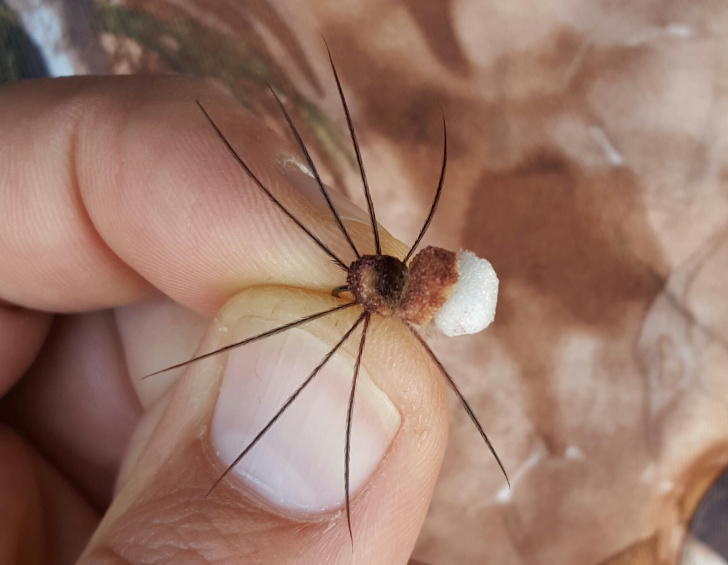
Floating (above) and sinking (below) Wolf Spider imitations sold by Marcel Terblanche

He calls this pattern, in both floating and sinking versions, the Waterwolf and both proved successful during his first trials with the pattern on the Smalblaar.
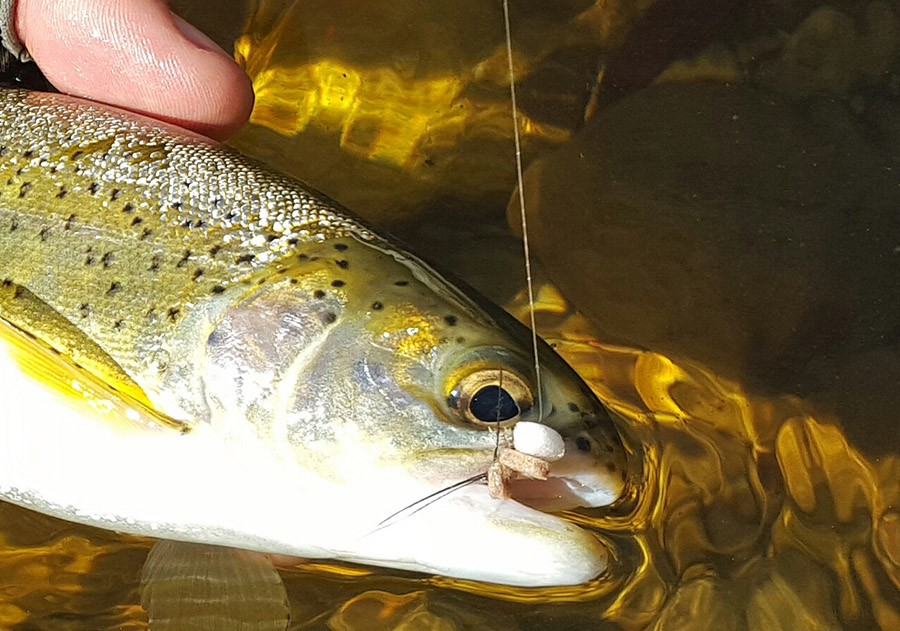
A Smalblaar rainbow deceived by the floating version of the Waterwolf
Beetle design
About 25 years ago a fly-fishing acquaintance attended a show where Ed Koch, one of the legendary pioneers of terrestrial fishing on the Letort Spring Run in Pennsylvania was selling his flies. He bought the beetle imitations shown here. It is a simple tie – just a piece of red, brown or black foam tied to a #20 Partridge Vincent Marinaro Midge hook. In his book Terrestrial Fishing – The History and Development of the Jassisd, Beetle, Cricket, Ant and Inchworm on Pennsylvania’s Legendary Letort - Koch says there was a plague of Japanese Beetles on the Letort in the 1950s and 60s and local residents used to set traps for them. Marinaro, Charles Fox and others used to visit the traps, collect the beetles and chum with them. One of Marinaro’s first imitations involved dry fly hackle palmered along the hook shank, clipped top and bottom in the Jassid technique and this was topped by a coffee bean glued into position. (The Jassid, incidentally, now a world famous pattern, was developed by the late David Scholes, the doyen of Australian fly fishers. It was shown to Marinaro by Joe Brooks after the latter had visited Australia.)
The Koch beetle reinforces Marinaro’s belief that silhouette is the most important factor in beetle imitations. Down here, on the southern tip of Africa, Marcel Terblanche continues to refine my Bushwhack Beetle which sports a light-reflecting sighter inserted into the foam top of the fly. His latest version copies some of the design features used by a friend. Instead of pulling the foam strip forward tightly over the top of the fly, he leaves a gap over the body of CDC dubbing (See below.) This creates an air pocket which improves buoyancy.

Ed Koch’s ultra- simple and quick-to-tie foam beetle patterns
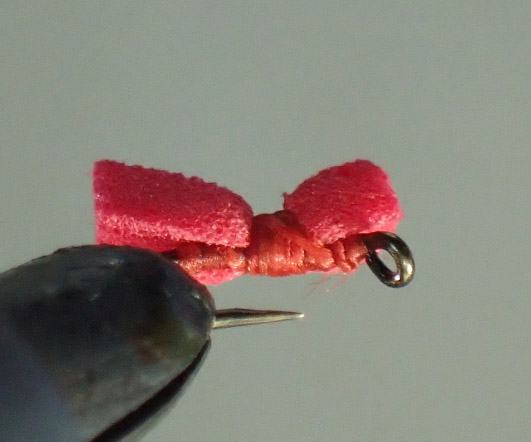

The latest version of the Bushwhack Beetle as tied by Marcel Terblanche
All interesting food for fly tying thoughts!
Ed Herbst

